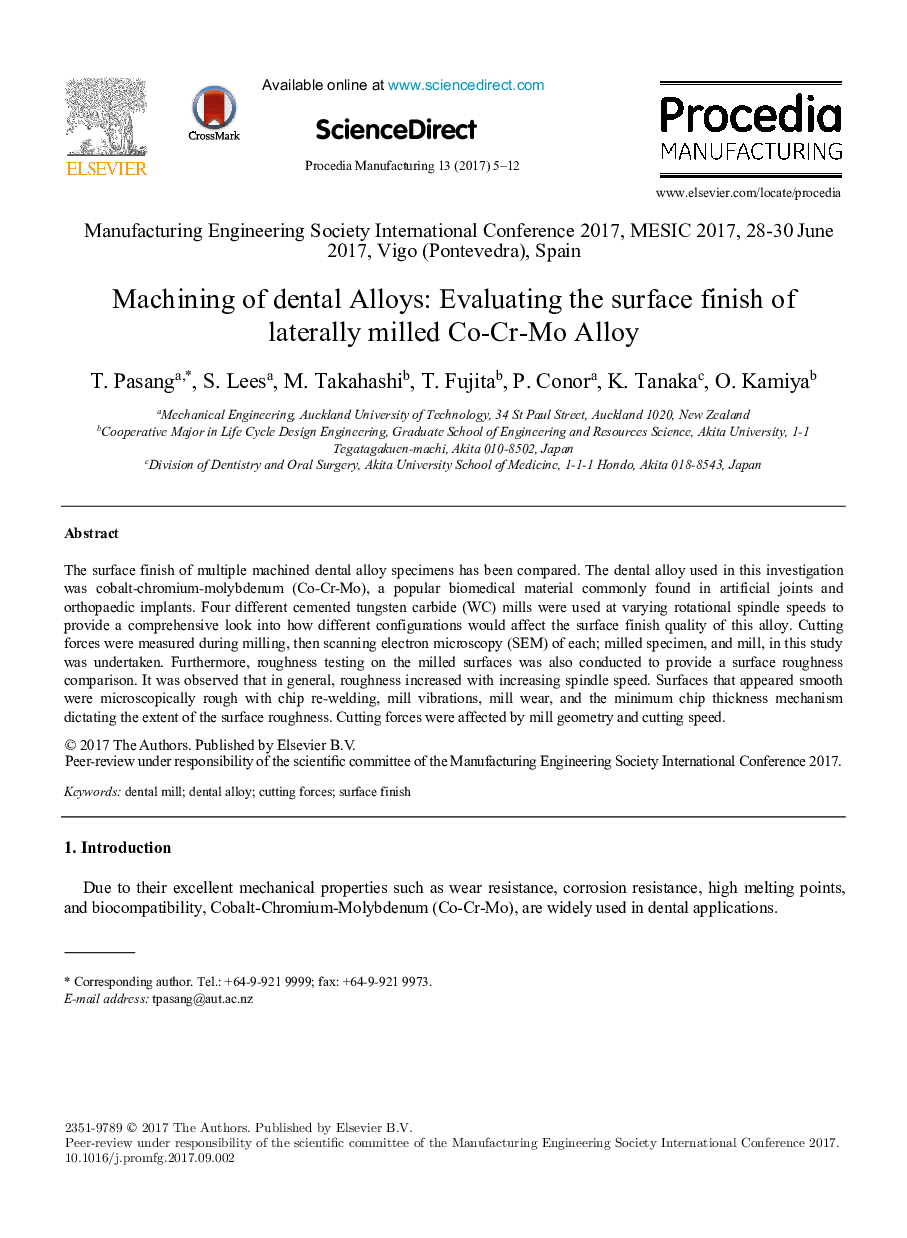| Article ID | Journal | Published Year | Pages | File Type |
|---|---|---|---|---|
| 5128503 | Procedia Manufacturing | 2017 | 8 Pages |
The surface finish of multiple machined dental alloy specimens has been compared. The dental alloy used in this investigation was cobalt-chromium-molybdenum (Co-Cr-Mo), a popular biomedical material commonly found in artificial joints and orthopaedic implants. Four different cemented tungsten carbide (WC) mills were used at varying rotational spindle speeds to provide a comprehensive look into how different configurations would affect the surface finish quality of this alloy. Cutting forces were measured during milling, then scanning electron microscopy (SEM) of each; milled specimen, and mill, in this study was undertaken. Furthermore, roughness testing on the milled surfaces was also conducted to provide a surface roughness comparison. It was observed that in general, roughness increased with increasing spindle speed. Surfaces that appeared smooth were microscopically rough with chip re-welding, mill vibrations, mill wear, and the minimum chip thickness mechanism dictating the extent of the surface roughness. Cutting forces were affected by mill geometry and cutting speed.
